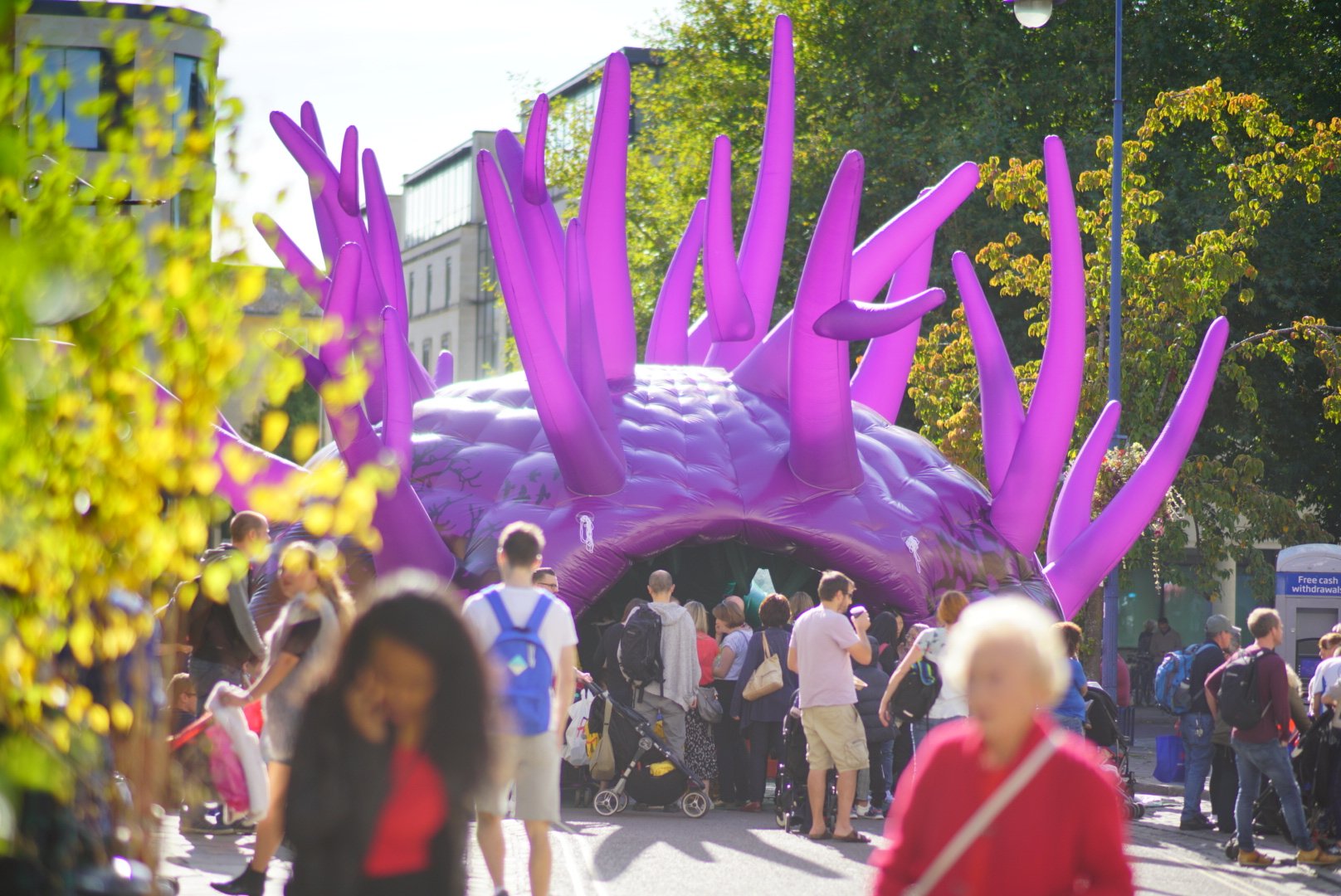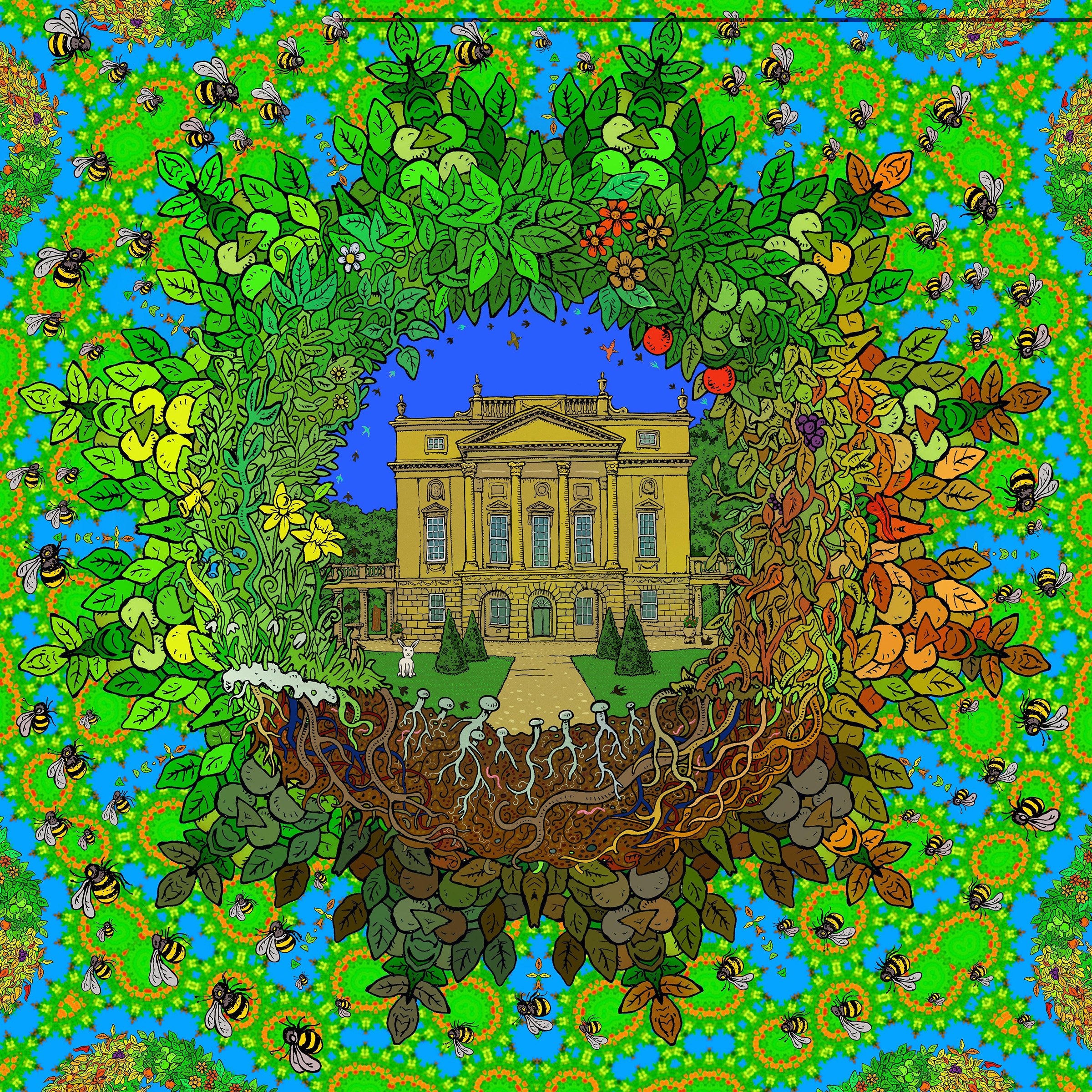
Forest of Imagination engages intergenerational communities as ecological citizens to reimagine ways of being and acting in the world for social and environmental justice
Photo: Andrew Grant
An emerging space of possibility
Besides awarding degrees, how are our universities supporting young people? This is a question NCACE’s Evelyn Wilson has been investigating, with contributions from Penny Hay, Jen Wong, Rebecca Johnson and Akil Hunte.
“What’s the point of universities if not to make the world a better place?” It’s a question Jen Wong, head of programming at Science Gallery London asked me recently. And it’s indeed a pertinent question in the current climate, in which Higher Education is seen by many as luxury rather than a right, and where income is often a proxy for value, particularly in relation to the arts with courses being cut and posts made redundant.
On the surface, it’s a pretty bleak picture, so it is galvanising to tune into the growing diversity of ways in which universities are supporting young people, alongside being providers of degrees. This work is quite under-narrated – but powerful initiatives are taking place in areas from health to environment to social justice.
Forest of Imagination
Professor Penny Hay of Bath Spa University attests: “Partnerships between cultural and academic institutions are vital, especially in times of crisis. [Our research project] Forest of Imagination engages intergenerational communities as ecological citizens to reimagine ways of being and acting in the world for social and environmental justice.
“Forest of Imagination is an annual participatory contemporary arts and architecture event in Bath, that is free and open to all. It is co-designed with the cultural, educational and creative community, with a creative learning programme delivered by a collaborative and multidisciplinary team.
“Each year it reimagines familiar spaces in an urban context, alongside young people, inspiring creativity, and heightening awareness of nature in response to the ecological emergency. It’s a creative ecosystem for art and participation. Spaces are reinvented to inspire spontaneous play, unleash imagination, heighten our engagement with nature in the city environment and shine a light on the importance of local and global forests’ capacity to inspire creativity in everyone.
“The project is an example of civic engagement, innovation and participatory public engagement, widening participation with schools and colleges to generate new ideas and approaches with the education, creative and cultural sectors. It exemplifies an approach to cultural change with creative pedagogy and promotes co-creation and collaboration with a range of diverse partners including schools and cultural centres.
“Everyone is invited to have a conversation about the importance of nature connection and collective imagination in a playful immersive environment for all ages, and to seek creative solutions for more sustainable futures.”
Continues…

Forest of Imagination: Ring of Life. Image: Perry Harris
Science Gallery London and The Change Collective
Learning to become culture sector leaders and to navigate relationships, partnerships and institutions is no easy task. Yet that’s what a new entity called The Change Collective did last year when they curated an event called ‘How to survive and thrive in an institution’, supported by Science Gallery London, part of King’s College London. The gallery seeks to be a porous membrane between the university and the city, in particular its ‘home’ boroughs of Lambeth and Southwark.
Jen Wong, Science Gallery London’s head of programming says: “The Change Collective is a group of about 10 young people from south London and King’s College London who are committed to social justice and systemic change. The group have grown together since 2024 and explored systems change from a number of different perspectives.
“They are a vital part of how the gallery seeks to centre youth perspectives in its programme. In tandem with The Change Collective – and in recognising that young people need to be at the centre of shaping and designing future systems and structures – the gallery also runs the Just Futures residency.
“Here, young creatives are invited to explore and experiment with ideas for more equitable futures, in collaboration with King’s researchers. Current residents Hey Sis are using creative research methodologies to explore ideas of sisterhood in collaboration with King’s Visual Embodied Methodologies network, whilst previous residents The Spit Game UK used film making to research the lived experience of racism that many young black people face within secondary education settings.”
Blackburn Museum and Art Gallery
In Blackburn with Darwen, Dr Cynthia Johnston from the School of Advanced Study, University of London, has been partnering with Blackburn Museum and Art Gallery for over 10 years. The collaboration centres on the Hart collection of medieval manuscripts and this ongoing work has led to the university being a key part of the growing cultural ecology of the area.
Rebecca Johnson, arts and heritage manager at Blackburn and Darwen Borough Council says: “One of the unanticipated aspects of the partnership is how it’s enabling young people to carve creative careers through a paid internship programme, supporting young people to work across cultural institutions. Explorations of cultural collections to make them relevant across generations is another exciting dimension of this partnership.”
Foundation art students have, for example, come together with older heritage experts to debate Stranger Things alongside Medieval manuscripts, handling and getting intimate with the documents in the process. These unexpected outcomes illustrate how collections-based partnerships between the cultural sector and academics can have wider impacts around the intersections of youth, class, access and intergenerational learning, to name a few.
Other initiatives that are being supported include: Creative collective – a partnership with the National Festival of Making to support emerging and early career artists; Refugee art Alliance – supporting refugee artists to develop skills and confidence and Chip In – a cultural volunteering scheme.
In all these partnerships, young people are not only gaining access to a range of academic input from talks to close-ups with manuscripts but also gaining confidence and critical creative and life skills as a result.
A growth mindset
It is encouraging to see such a wide range of culture-led youth projects being supported by universities. While funding can be challenging, there is huge potential for the future of this work and hothousing it requires careful and generous multi-stakeholder action.
Putting such work in place requires a growth mindset. After all, knowledge generation and culture are and always have been a driver of growth, aspiration and imagining new possibilities. Given the success of Culture Compacts in encouraging joined-up work and networks in what have been dubbed ‘cultural coldspots’, this is surely the moment to support Youth Compacts.
As Akil Hunte, young award-winning lawyer, poet, speaker and social entrepreneur and part of The Change Collective tells us: “Being part of The Change Collective was an incredible experience, allowing me to meet other young people who were similarly interested in bringing about systems change in society.
Working with others to put on an event on how to survive (and thrive) in an institution gave me the confidence to look at institutional change through a different lens. I learnt so much from my peers, facilitators and various speakers about what change looks like to me, and what role I can play in bringing about change in society.”
With his sort of commitment and vision and that of other rising young stars and their invisible magic-making counterparts, this is an emerging space of possibility that needs to be paid so much more attention and given the support it so rightly deserves.
NCACE is holding a meet up to support this work in June and will be making announcements on our website soon.
Join the Discussion
You must be logged in to post a comment.